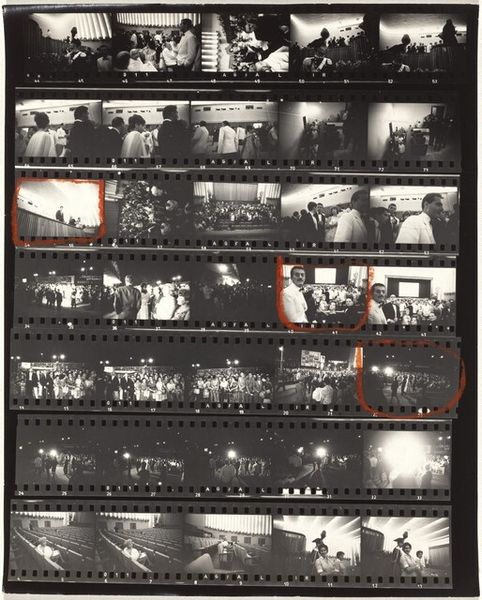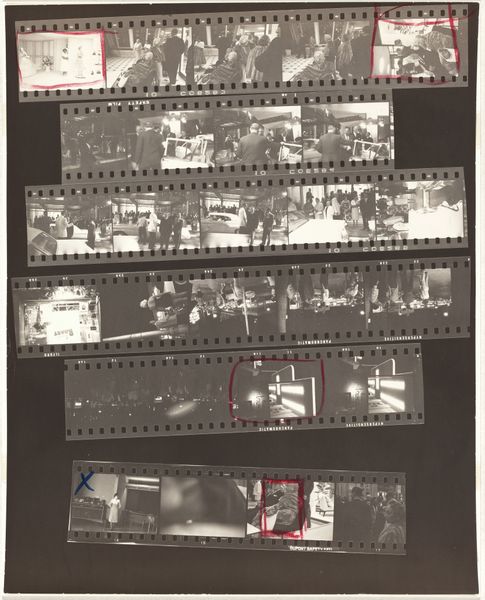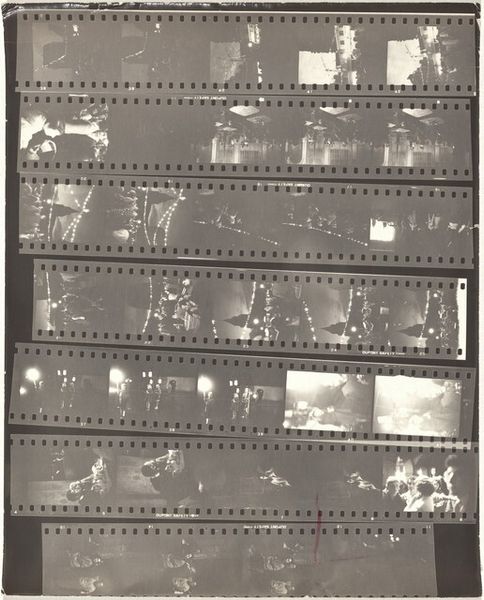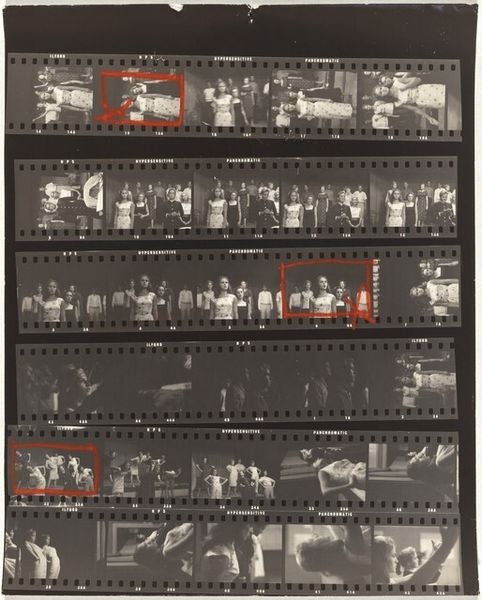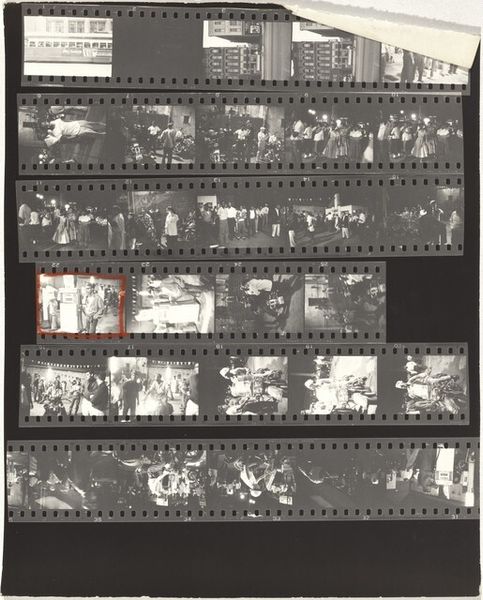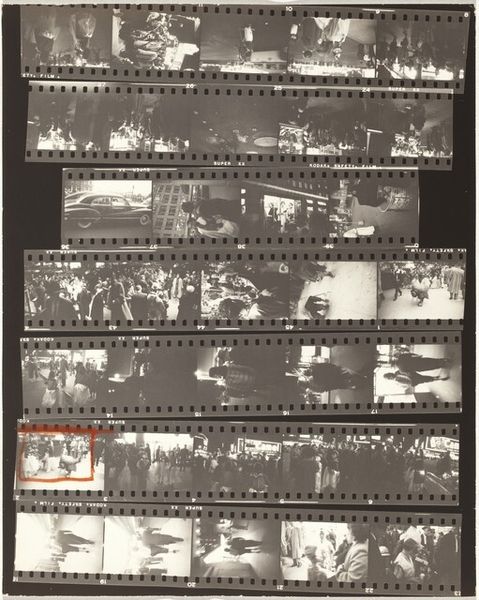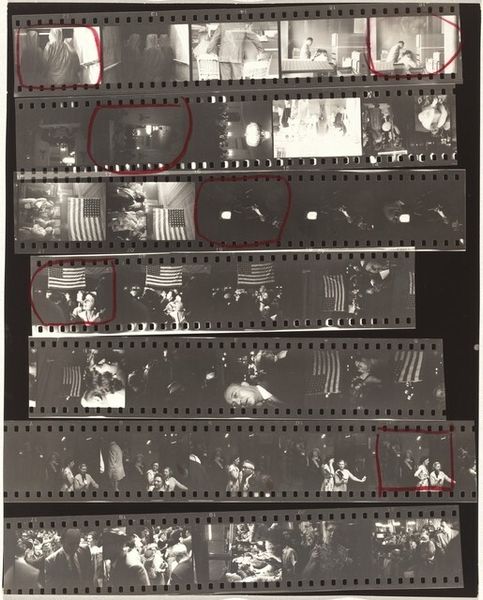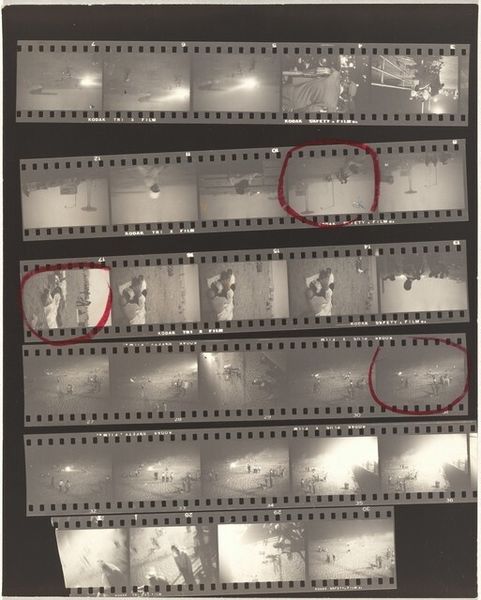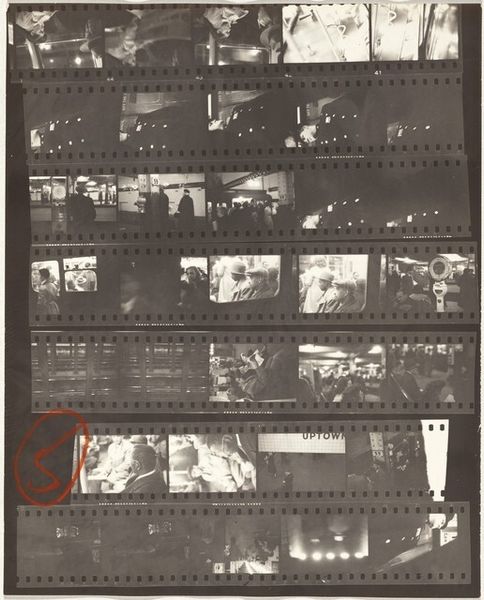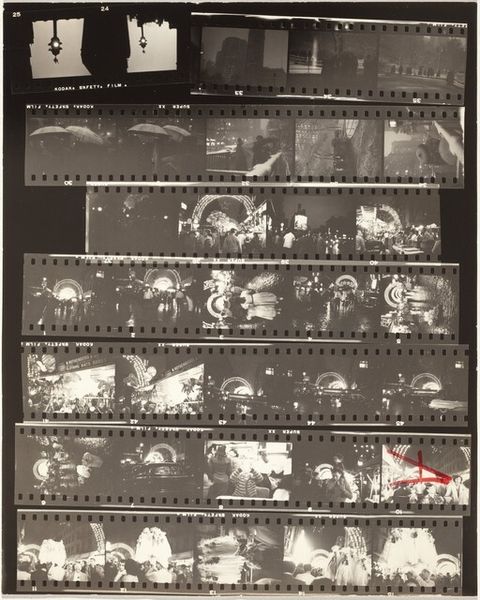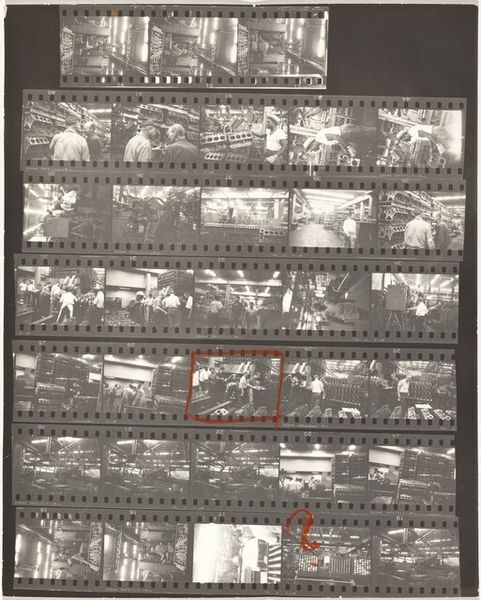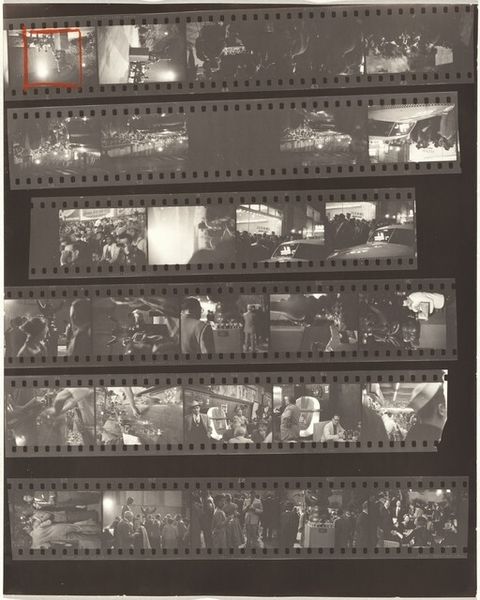
photography, gelatin-silver-print
#
abstract-expressionism
#
archive photography
#
street-photography
#
photography
#
gelatin-silver-print
Dimensions: overall: 20.2 x 25.2 cm (7 15/16 x 9 15/16 in.)
Copyright: National Gallery of Art: CC0 1.0
Curator: So, this is Robert Frank’s “New York City no number”, taken around the late 1950s. It’s a gelatin silver print of uncut film negatives. Editor: It has such a raw, immediate feel. Seeing the film strip itself really brings you into the photographer's process. Almost like looking over Frank’s shoulder as he’s shooting, or in the darkroom deciding which image to choose. Curator: Precisely. Frank's work, particularly "The Americans," challenged the optimistic postwar narrative. It presents a gritty, almost voyeuristic view of American life. This film strip reveals part of the artistic production behind it. Editor: Look at the contrasts, how the light flares out! And that bold red "X" scrawled over several frames-- a strong directorial statement! The formal elements point to a chaotic but ultimately powerful vision, a world of deep shadows and bright, blinding light. It mirrors the city’s vibrant yet stark realities. Curator: That "X" marks photographs not chosen for printing. It also serves as a stark reminder that photographs are not objective documents; rather they reflect the cultural biases, socio-economic factors, and personal interventions that shape our view of the world. We're seeing his selection process laid bare. This brings questions about which images become iconic and how meaning is shaped in what is discarded and not only in what is promoted. Editor: You're right; the discarded is speaking to us. The composition, even of these rejects, has so much energy. They tell a visual story of that era. A fragmented, imperfect, and undeniably arresting story of New York! Curator: Indeed. And that inherent imperfection contributes to its powerful counter-narrative. This work and process questions the medium of photography and forces a reconsideration of our collective American self-image during the height of the Cold War era. Editor: It's rare to get this type of access. We're able to be almost inside of his eye, seeing what he valued or didn't value from his shots. I think it becomes another piece in his greater artistic expression. Curator: Ultimately, this contact sheet is not just a behind-the-scenes look; it’s a deliberate and potent statement about the complexities of seeing and representing reality in the late 1950s. Editor: Agreed. "New York City no number" shows us that even the artistic decisions of what not to show contribute to the meaning of Frank's finished works.
Comments
No comments
Be the first to comment and join the conversation on the ultimate creative platform.
